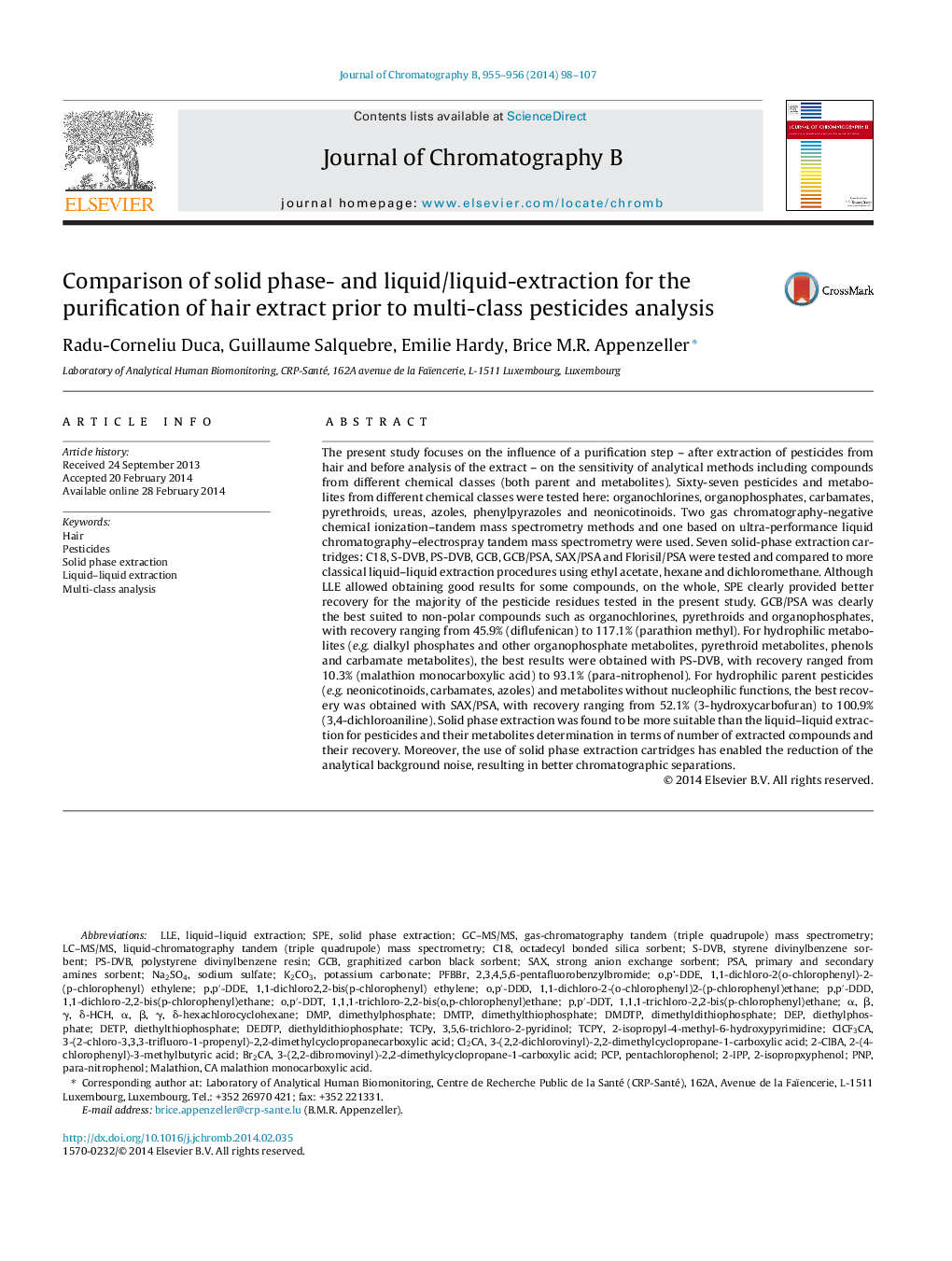| Article ID | Journal | Published Year | Pages | File Type |
|---|---|---|---|---|
| 1216102 | Journal of Chromatography B | 2014 | 10 Pages |
•Multi-residue pesticide analysis in hair requires efficient extract purification.•Several purification procedures were tested on 67 pesticides/metabolites.•SPE provided better purification than LLE whatever the chemical class tested.•SPE reduced analytical background noise and improved chromatographic separations.•The most adapted SPE depended on compound chemical classes.
The present study focuses on the influence of a purification step – after extraction of pesticides from hair and before analysis of the extract – on the sensitivity of analytical methods including compounds from different chemical classes (both parent and metabolites). Sixty-seven pesticides and metabolites from different chemical classes were tested here: organochlorines, organophosphates, carbamates, pyrethroids, ureas, azoles, phenylpyrazoles and neonicotinoids. Two gas chromatography-negative chemical ionization–tandem mass spectrometry methods and one based on ultra-performance liquid chromatography–electrospray tandem mass spectrometry were used. Seven solid-phase extraction cartridges: C18, S-DVB, PS-DVB, GCB, GCB/PSA, SAX/PSA and Florisil/PSA were tested and compared to more classical liquid–liquid extraction procedures using ethyl acetate, hexane and dichloromethane. Although LLE allowed obtaining good results for some compounds, on the whole, SPE clearly provided better recovery for the majority of the pesticide residues tested in the present study. GCB/PSA was clearly the best suited to non-polar compounds such as organochlorines, pyrethroids and organophosphates, with recovery ranging from 45.9% (diflufenican) to 117.1% (parathion methyl). For hydrophilic metabolites (e.g. dialkyl phosphates and other organophosphate metabolites, pyrethroid metabolites, phenols and carbamate metabolites), the best results were obtained with PS-DVB, with recovery ranged from 10.3% (malathion monocarboxylic acid) to 93.1% (para-nitrophenol). For hydrophilic parent pesticides (e.g. neonicotinoids, carbamates, azoles) and metabolites without nucleophilic functions, the best recovery was obtained with SAX/PSA, with recovery ranging from 52.1% (3-hydroxycarbofuran) to 100.9% (3,4-dichloroaniline). Solid phase extraction was found to be more suitable than the liquid–liquid extraction for pesticides and their metabolites determination in terms of number of extracted compounds and their recovery. Moreover, the use of solid phase extraction cartridges has enabled the reduction of the analytical background noise, resulting in better chromatographic separations.
